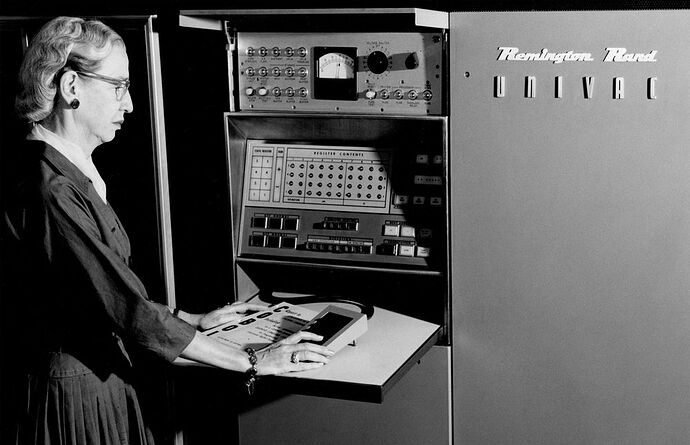(Dr Grace Murray Hopper at the console of a UNIVAC Solid State computer, 1961)
During World War II, German engineers, needing rugged electronics for the guidance and control circuits of the V-2 missile, perfected an obscure device called the “magnetic amplifier” which, like vacuum tubes, was able to amplify and switch electricity but, unlike fragile tubes, was immune to shock and vibration. After the war, U.S. engineers discovered the Germans had developed special alloys that made these devices efficient and reliable and were able to reverse engineer and make their own.
During the 1950s and 1960s, magnetic amplifiers were seen as a competitor to vacuum tube circuits, and were used in military and aerospace gear. UNIVAC built a computer, called the UNIVAC Solid State, which used 3000 miniaturised magnetic amplifiers as its primary logic elements. UNIVAC chose magnetic amplifiers because transistors of the time were too inconsistent in their behaviour and unreliable for computer circuitry. The magnetic amplifiers required a lot of current to switch, which was provided by a bank of 4CX250B transmitting tubes (not solid state!) that belted out a kilowatt of power to drive the magnetic amplifiers.
Now, Ken Sherriff has written a delightful chronicle of the saga of the magnetic amplifier for IEEE Spectrum, “The Vacuum Tube’s Forgotten Rival”, tracking this little-known component from its origin to applications in the Space Shuttle and in the power supplies of 1990 vintage personal computers.
